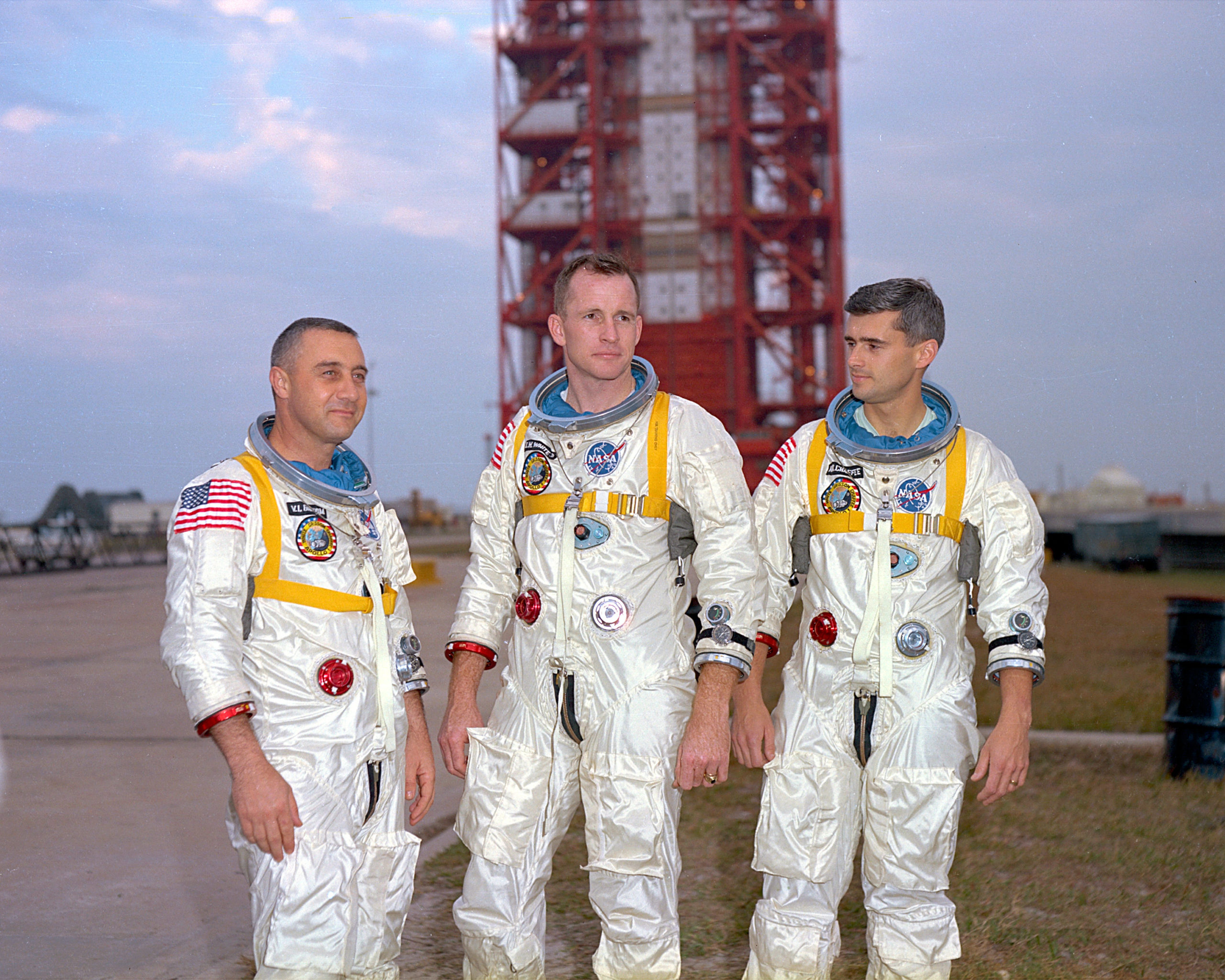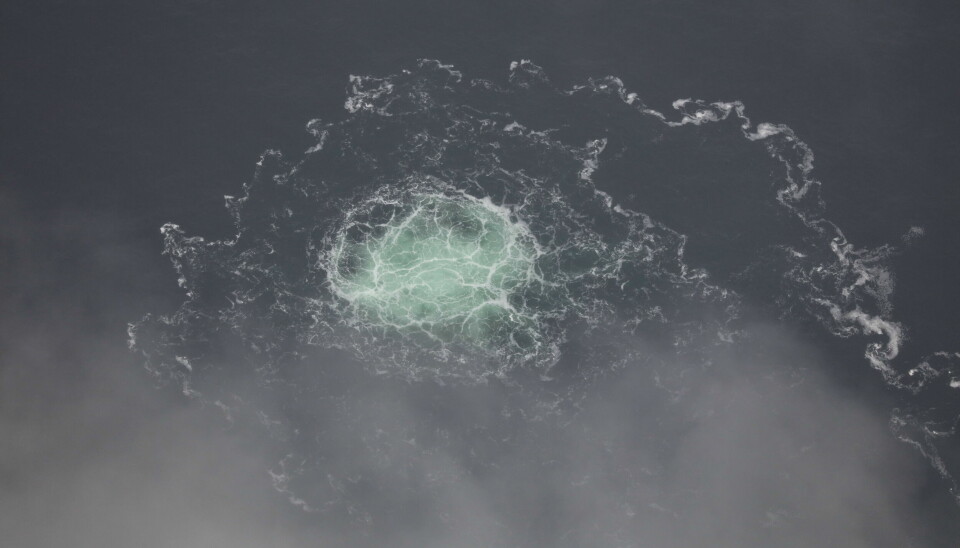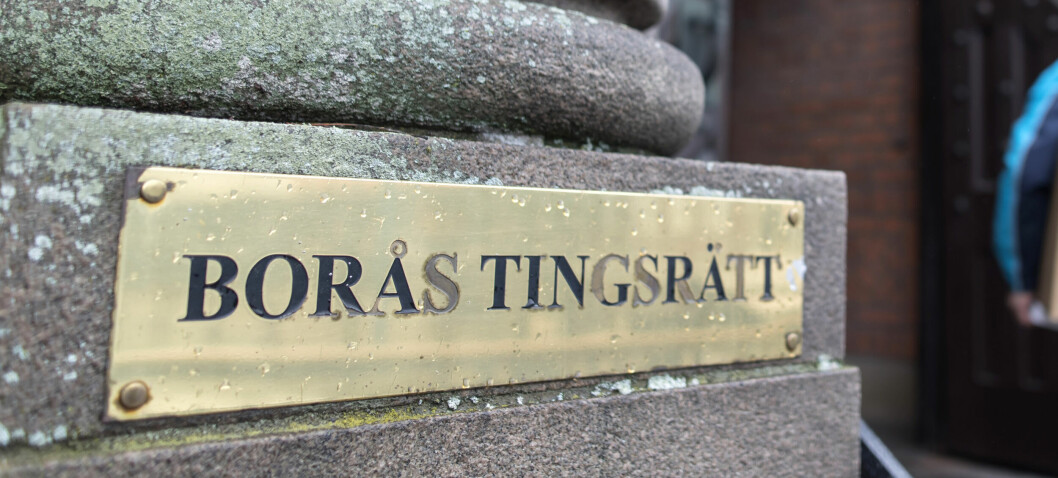The 7 Apollo program’s leap towards the moon
The American Apollo program took man to the moon. But astronaut Neil Armstrong’s first footprint in the lunar dust came only after several crucial technological leaps within the space agency Nasa. The space engineer Olle Janson selects seven remarkable events in the Apollo program.

The crew, (from left in picture) Virgil “Gus” Grissom, Edward “Ed” White and Roger B Chaffee, died. After the fire Photo: NASA
Apollo 1 (January 1967)
The mission in the Apollo program that was to be the first manned spaceflight, but which was hit by a fire in the oxygen-filled command module during a test countdown. The crew, (from left in picture) Virgil “Gus” Grissom, Edward “Ed” White and Roger B Chaffee, died. After the fire, and at the request of the families of the deceased, it was named Apollo 1 (see footnote) to honor the crew. The launcher survived, and was later used for the unmanned Apollo 5 flight.

Apollo 4 became the first to fly under the Apollo designation. Photo: Nasa
Apollo 4 (November 1967)
The first unmanned flight with the 110 meter high and about 2,800 ton heavy three-stage rocket Saturn V. It was also the first time several new rocket stages were tested at the same time, in a so-called “all-up test”. To test the command module’s heat shield, it was launched into a high elliptical orbit, and given a velocity and orbit angle similar to that at re-entry into the atmosphere from the moon. A camera on board took the first pictures of the earth from the top altitude of 18,000 kilometers. Apollo 4 became the first to fly under the Apollo designation (see footnote).

Photo: Nasa
Apollo 7 (October 1968)
The first manned flight, with seven days in orbit around the earth. The journey was made with the now upgraded and much safer “Block II” capsule. The crew was still breathing pure oxygen in their suits, but the capsule was fed with 40 percent nitrogen, which was then vented as the rocket rose and the pressure was lowered. The complicated door, which contributed to the Apollo 1 disaster, had been replaced by one that was much easier to open when needed for quick evacuation. However, the same type of launch vehicle was used – the just over half as large Saturn IB – which would also have carried Apollo 1.

Photo: Nasa
4. Apollo 8 (December 1968)
The first manned flight with Saturn V. The rocket would also have brought the lunar lander, for tests in orbit around the earth. However, it was greatly delayed, and plans were changed to round the moon instead. Astronaut William A “Bill” Anders took the well-known image of the earth rising above the lunar horizon. It was ten laps around the moon before they returned home. Now the United States was definitely ahead of the Soviet Union in the space race.

Photo: Nasa
5. Apollo 11 (July 1969)
In the words of Commander Neil Armstrong, “A small step for a man, but a giant leap for humanity,” the first steps were taken on the moon. The journey to the moon had gone well, and apart from a few computer alarms, the descent to the lunar surface was also quite trouble-free. On the other hand, the uneven gravity of the moon, and the remaining pressure in the docking tunnel during the separation, had led to the planned landing point now being missed by several kilometers, and almost all fuel being consumed.

Photo: Nasa
Apollo 13 (April 1970)
It is from this spaceflight that we remember Commander James A “Jim” Lovell’s quote “Houston, we’ve had a problem”. An oxygen tank with hidden defects exploded after nearly 56 hours of travel, just before the moon’s gravity began to dominate. One side of the service module was torn up, the fuel cells stopped working and the crew had to quickly shut down the command module to save batteries. Instead, they had to use the lunar lander as a lifeboat, until the module could be restarted before entering the atmosphere and landing. The journey has sometimes been called “the successful failure”. The picture shows the damaged service module, with the side panel blown up.
.jpg)
Photo: Nasa
Apollo 15 (July-August 1971)
The first mission where a lunar car was used. The car, with “tires” of metal mesh, was stored folded in a just 1.5 meter large triangular compartment in the lunar lander and allowed the explored area on the moon to be expanded. The moon car had an unladen weight of 210 kilos and a top speed of 13 kilometers per hour. Total mileage was about 30 km. The picture shows the lunar car and astronaut David Scott.
Footnote: Saturn rockets began to be launched gradually as early as 1961. However, the Apollo series only includes the journeys with complete spacecraft, manned as well as unmanned. Apollo 1 was actually the third launch, after two unmanned vehicles. It was then followed by Apollo 4. This has created some confusion afterwards, as Nasa also used the launchers’ serial numbers instead for an early period.



